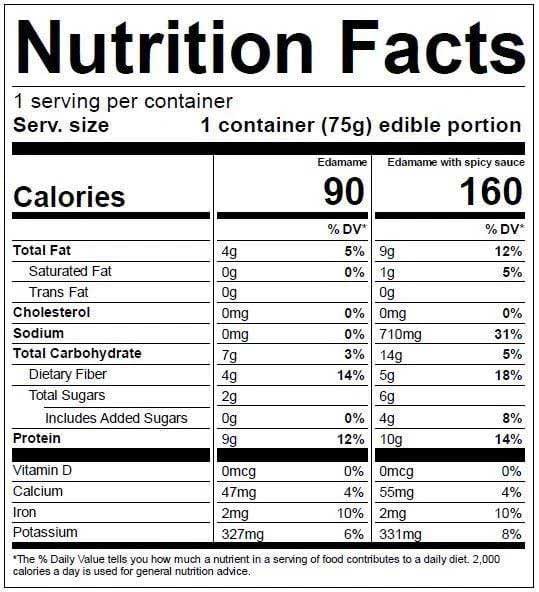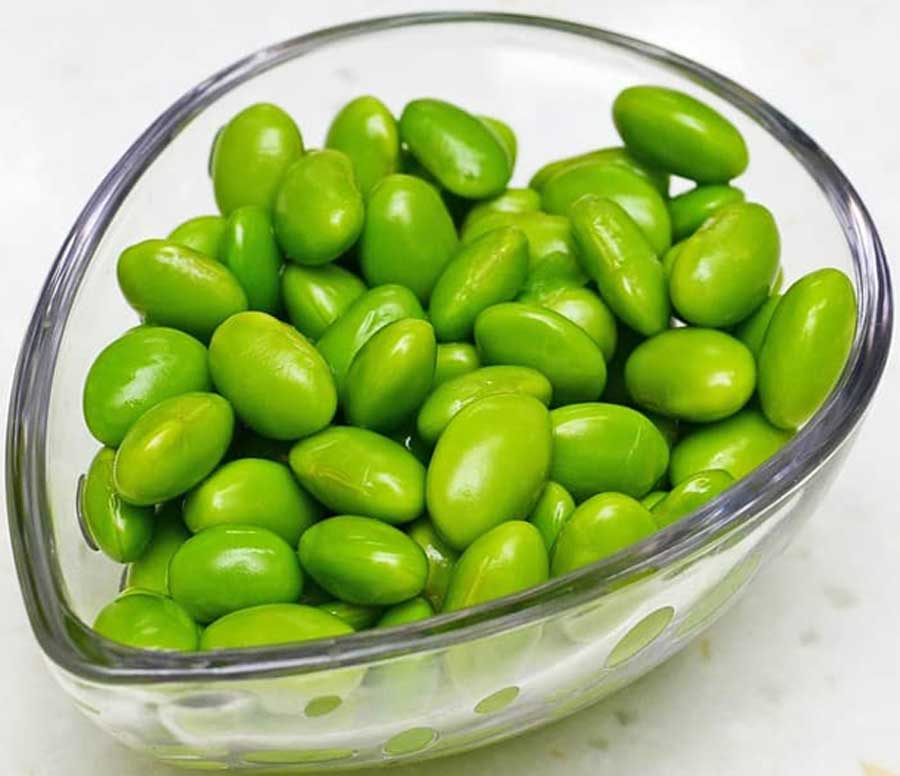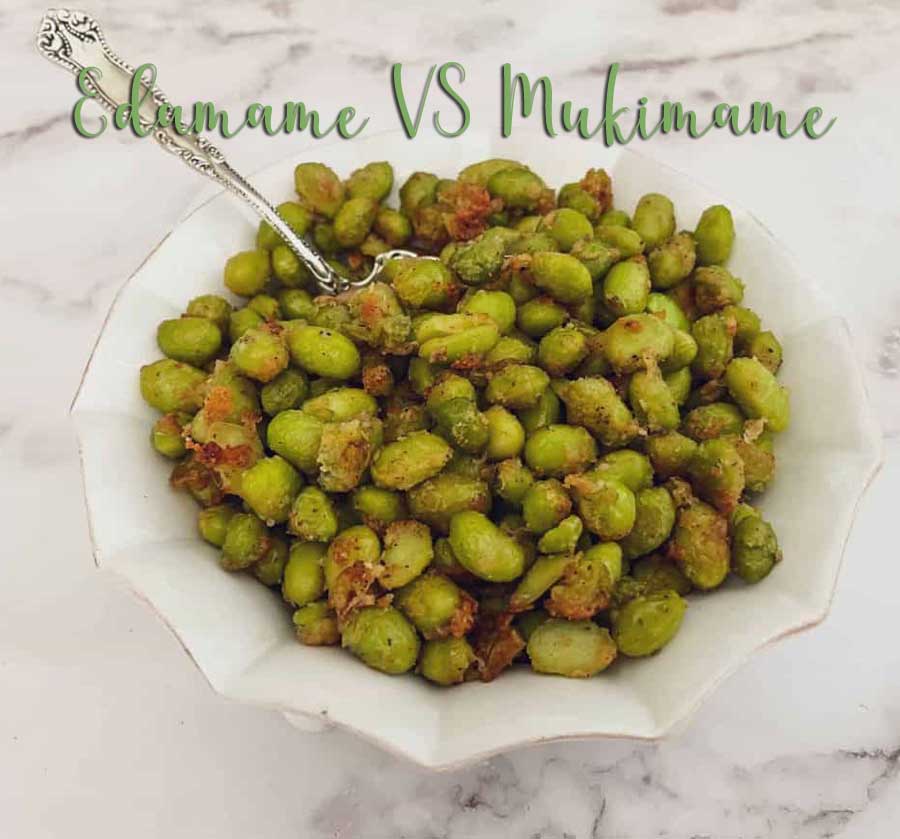Maybe you have heard of Mukimame and Edamame beans, so you are wondering what the difference is between the two. Perhaps some of you think it is the name of a Japanese[ appetizer or other food menu. The two words Mukimame and Edamame sound the same but there are differences between them. So to eliminate your curiosity, I want to write about Mukimame vs Edamame in this article, I hope it’s useful!
We found This review online and written by Lindsay Delk, RDN. The purpose of this information is only as additional knowledge and is in no way intended to replace medical advice. Ok, we will see the differences between Mukimame vs Edamame, hopefully, this information is useful and will be additional knowledge for everyone.
What is Mukimame/Edamame?
Mukimame and Edamame are immature soybeans and are picked when they are not yet ripe. The taste is sweeter compared to mature soybeans, and the color is green which indicates the beans are still young. The two types of beans, Mukimame and Edamame, have been popular in Asian countries for centuries, and now they are increasingly popular in non-Asian countries.
Mukimame vs Edamame
So far we haven’t discussed the differences between Mukimame and Edamame, and it looks like we can start now.
Mukimame is the name for nuts including inedible pods. Mukimame are beans that have been peeled from the pod, while edamame are beans that are still in the pod. So, both come from the same type of beans, only the difference between Mukimame vs Edamame is whether the beans have been peeled or not.
Nutrition Facts for Shelled Edamame (Mukimame)

What about the nutrition, are these beans rich in nutrients or vice versa? The table above shows the nutritional values for one cup (95 g) of shelled edamame.
Shelled edamame beans are legumes, but if we look at their nutrition, the nutritional content in these legumes is different from other legumes in general. Edamame is a type of legume that contains fewer carbohydrates and is higher in protein compared to legumes in general.
So, if you need food high in protein, you can try edamame. It’s good for dieters because it can maintain fullness and prevent the formation of fat that occurs from carbohydrates.
Peeled edamame are beans that are rich in protein and contain all the amino acids the body needs. You could say this amino acid is a protein-building block. This essential amino acid means it is needed by the body and its role is very important because the body cannot produce it itself, but essential amino acids come from food. So, shelled edamame is a healthy food that should be a priority for consumption.
Edamame is a storehouse of two types of essential amino acids that are rich in fiber, folate, vitamin K, iron, calcium and manganese. In edamame there are anti-oxidants called isoflavones, and several other types of antioxidants, their job is to fight free radicals (which cause cancer). Then, edamame is also a gluten-free food so it is safe for consumption by people with celiac disease. It is also rich in prebiotics which are important food for the survival of beneficial bacteria in the intestines.
Health Benefits of Edamame/Mukimame

As a protein, edamame or mukimame has many health benefits. In this discussion, we will show several important benefits of this bean food.
1. Reduce cholesterol and high blood pressure
Protein from grains such as soybeans and edamame or mukimame is very good for health. This food can reduce total cholesterol and LDL and can increase HDL.
Research shows that consuming edamame provides benefits for directly lowering cholesterol and can also lower blood pressure even in small amounts.
2. Reduces the risk of cancer
There is a lot of evidence that speaks about the benefits of grains or soybeans in reducing the risk of cancer. Soy foods such as tempeh, edamame, miso, tofu, and soy milk have been proven to reduce the bad effects of cancer or even reduce the risk of cancer itself.
Eating food from soy sources is one form of discourse on a healthy diet.
3. Improve bone health
Edamame contains isoflavones, the benefits of which are improving bone health and preventing bone fragility. In research, it is stated that consuming foods sourced from soybeans continuously can provide great benefits for bone health, although this research still requires further research. Likewise, food patterns that rely on whole plant sources.
How to Cook and Eat Mukimame/Edamame
Edamame or Mukimame is a food that is easy to prepare. You can peel or cut the pods in various ways. The following method for cooking edamame is based on the use of unpeeled and peeled frozen edamame (mukimame):
1. Boiling
Boil the edamame in the pod or boil the peeled mukimame for 2-4 minutes in salted water. Serve while still hot or cold with salt.
2. Steaming
You can also boil edamame or mukimame for 6 minutes in a covered pan serve warm, or cold, and sprinkle on top with salt.
3. Microwaving
Another way to cook edamame in pods and peeled mukimame is to use the microwave. Use a high temperature and microwave for 2-4 minutes, you must use a microwave-safe container and you must use a little water.
For taste, please season according to your wishes, use salt, pepper, and other spices.
4. Sautéing
The next way to cook edamame/mukimame is to stir-fry it. Saute edamame (edamame in a pod) or mukimame (peeled mukimame) for 5 minutes, stir, and season according to your taste. You can use onion, pepper, and garlic powder.
5. Roasting
Drain the peeled edamame, sprinkle with a little olive oil, pepper, salt, or use parmesan. Bake at 400F for 15 to 20 minutes.
6. Air frying
You can also use the air fryer recipe for unpeeled edamame or the air fryer recipe for unpeeled mukimame.
Recommendation:
- Eel Sauce VS Hoisin Sauce: What’s the Difference?
- Cognac Vs Rum: What’s the Difference?
- Pad Thai Vs Lo Mein – Which is Healthiest?
Mukimame vs Edamame FAQ
What is the difference between Edamame vs Mukimame
Both are the same, only the difference between the two is that edamame is the beans still in its pod, while mukimame is a type of pod that has been peeled.
How Many Carbs Are in Edamame?
1 cup of shelled edamame contains 15.8 grams of carbohydrates, this is about 33% of the calories in shelled edamame comes from carbs. There are around 8.1 grams of these carbohydrates that come from dietary fiber and are not completely digested by the body.
Is Edamame keto?
Edamame can be a part of the keto diet because it is low in carbohydrates and high in protein. One cup of edamame contains about 8 grams of carbohydrates. When eaten in moderation, edamame can be a keto-friendly food.
Is edamame gluten-free?
Yes, edamame is naturally gluten-free and safe for celiac or gluten-intolerant sufferers.


